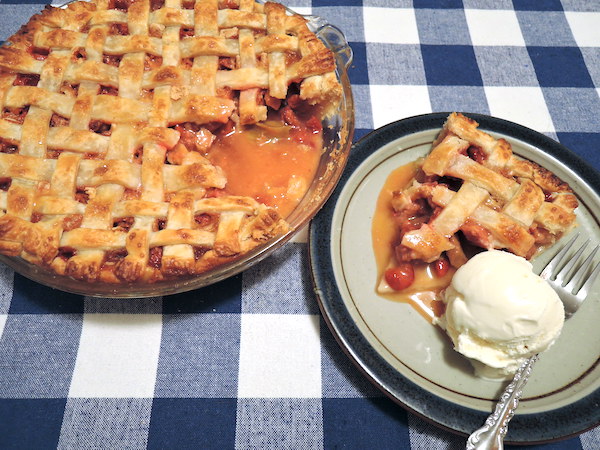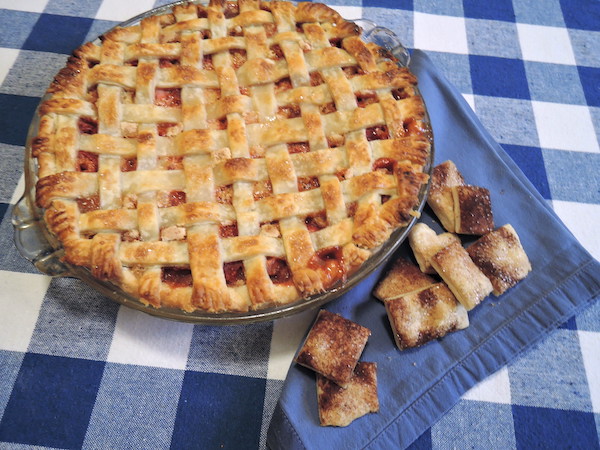At GoodFood World, we’re all about whole or minimally processed food and avoiding all those additives and preservatives that Big Food uses to give “edible food like substances[1]” their creative aromas, peculiar colors, more-intense-than-real flavors, and months’ long shelf life.
The very best way to do that is bake or cook as often as you can. If you can't grow your own, buy from friends, the farmers market, or from millers and processors where you can walk into their operation, take a look around, and shake hands!
Gardening in Montana is iffy at best… This year we had the coldest, wettest spring on record - at least, our record since moving here in 2016. Everything is late and slow, except for the rhubarb.

Last summer, we planted a handful of rhubarb seeds in a pot and nurtured them through the hottest summer onrecord – again, since our moving here. Admittedly two weeks over 90ᵒF and at least five days over 95ᵒF are intense. At the end of the season, we found the perfect spot to transplant the two plants that made it and tucked them in for the winter.
Those little rhubarbs were determined to do their best, and this week, just as the flower stalk started pushing up, I carefully harvested a handful of stems, intending to make a pie. All the books I’ve read said not to cut the first year, but we just couldn’t stand the wait.
À la mode!
I’m not the world’s best pie baker and this one would never make the cover of Pie Beautiful! In my family, my father was the pie baker (his other specialty was barbecued chicken, after all it was the 1950s and 1960s when he manned the grill), and only baked for holidays. So, I didn’t get much hands’ on training – actually nearly none – and that means I’m still working on my technique.
The pie and a few “left over crust cookies" were made from recipes taken from the New York Times Cooking section and the Settlement Cookbook. The NYT pastry is all-butter and very, very soft to handle, but so flakey! The filling recipe is from the Settlement Cookbook – the go-to place for those pies, cakes, and cookies your grandmother (if you’re my age) or your great-grandmother (if you’re a generation or two younger) made. Our copy is suffering its age; the cover is loose and favorite pages are spotted, but I still refer to it about once a week.
The filling could be called local if you ignore the sugar – though we do grow sugar beets in Montana: cherries from the tree in our front yard, strawberries from under the cherry tree, the rhubarb from a bed 25 feet further from the front door, and eggs bought from our local natural food store supplied by a local farmer in the Helena Valley, about 1 ½ miles to the north of us.
The crust is made of flour from Fairhaven Flour Mill in Burlington WA, not “local” since we moved to Helena, but still one of the very best millers we know. Their bread flour is a strong whole wheat that bakes up beautifully and they have a great selection of freshly milled flour and specialty grains.
Beauty is in the eye of the beholder and for pie taste is the real key. If I can do it, you can too. Bless him, Ken raved about the à la mode piece he had for dessert. The best sign of success!
Take care, eat well, be well!
Sources for flour and grain
Conservation Grains: Our favorites - Hazlet Rye, Sprouted Spring Flour, and Spelt, grown in Montana's Golden Triangle.
Bluebird Grain Farms: Very special ancient grains - Einkorn, Emmer, and Spelt, grown in north central Washington.
Living Sky Grains: Unique milling with a Unifine Mill - a system that pulverizes the grain on impact resulting in minimal starch damage, and optimum and uniform flour particle size. The flour is extremely fine and soft - we recommend the White Ultra-Fine Whole Wheat Flour. It's a whole grain flour milled from hard white spring wheat. Grown in central Montana.

